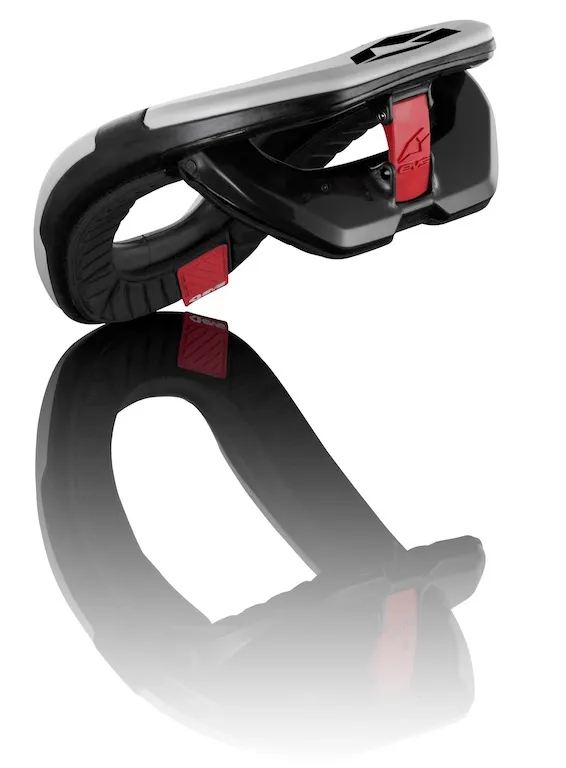EVS Sports, a motorsports protective gear manufacturer, may have a game changer in their new R4 Race Collar. The new neck brace is light, cheap, and EVS say boasts design benefits over other neck protectors.
The R4 Race brace is available in both adult (US$119) and youth sizes, and since the latter only costs US$99, there's virtually no excuse not to outfit both you and your high-flying grom with one.
“We’ve been making neck protection for a decade,” Cody Wolf marketing manager for EVS Sports told BikeRadar. “It started with just a foam race collar, and we made another, and still do, that attaches to a chest protector. We entered the full neck protection [category] mid-to-late 2008.”
Racing downhill, riding park, or even dirt jumping puts a rider at a greater risk of injury, plain and simple. Pads might protect your limbs but not your neck, thus expensive neck braces have become the norm for gravity pros and amateurs alike.
“There were a couple of reasons we developed the R4,” said Wolf. “One, we wanted to make something with an affordable price for everybody. The other goal was to develop and manufacture a lightweight, slim, sleek looking collar, and to target the areas that have been controversial as to why or why a rider should not [wear a brace]: collarbone injuries, shoulder separation, and C6, C7 fractures.”

The back of the R4 Race collar is meant to distribute energy away from the spine in a crash
EVS say that the R4 Race isn’t simply a budget offering, rather, it’s an evolved design that has benefits over those braces currently on the market. The 634g (claimed; youth weighs just 386g) R4 is built to both absorb and transfer energy, with EVS claiming that the former attribute is the feature that sets it apart from the competition. “If you have the brace in your hand, the white portion that you see, the top part, that’s a molded; underneath that lies a high-tensile closed cell PU core,” said Wolf. “The idea is: when the helmet hits that top molded cap — the back, sides, or the front — that PU will absorb, deflect and disperse the energy of the impact.”
EVS say that the hard plastic and carbon fiber used on other braces, doesn’t do enough to absorb the energy, rather they simply transfer it away from the cervical spine to other more sacrificial areas, namely the collarbone, or even the top of the thoracic spine. “Other competitors still tend to have a large portion of the rear of the brace resting solely on the spine,” he said. “We developed a tail that is shorter and wider, so when the helmet crushes into the back of the brace, so that instead of all that energy and all that force being pushed onto the spine, our brace is going to absorb, deflect, and disperse throughout the shoulder blades.”
Wolf says that EVS is currently working with third party contractors, both medical and biomechanical experts to verify these claims.
